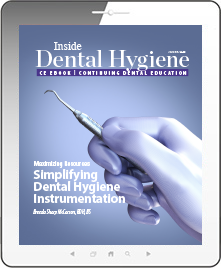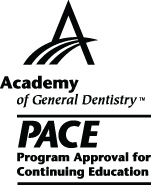CDEWorld > eBooks > Maximizing Resources: Simplifying Dental Hygiene Instrumentation


ADA CERP is a service of the American Dental Association to assist dental professionals in identifying quality providers of continuing dental education. ADA CERP does not approve or endorse individual courses or instructors, nor does it imply acceptance of credit house by boards of dentistry. Concerns or complaints about a CE provider may be directed to the provider or to ADA CERP at www.ada.org/cerp/

Approved PACE Program Provider. FAGD/MAGD credit. Approval does not imply acceptance by a state or provincial board of dentistry, or AGD endorsement. 1/1/2023 to 12/31/2028. ID # 209722.
eBook
Released: Friday, August 11, 2017
Expires: Monday, August 31, 2020
Maximizing Resources: Simplifying Dental Hygiene Instrumentation
By Brenda Sharp McCarson, RDH, BS
Commercial Supporter: Brasseler USA®
Hand instrumentation kits used when performing dental hygiene recare maintenance as well as for patients requiring more complex scaling and root planning (SRP) can contain as many as 12 instruments. However, most dental hygienists only use two to four instruments from either the recare maintenance or the SRP kit during an entire treatment procedure. This article explains how to simplify dental hygiene instrumentation into cassettes with fewer and more advanced instruments in order to realize various benefits for dental hygienists, patients and practices.
LEARNING OBJECTIVES:
-
Identify the most common instruments taught in dental hygiene school and used in clinical practice
-
Describe the process for evaluating and simplifying dental hygiene instrumentation
-
Explain the process of designing maintenance and SRP hygiene cassettes that contain instrument selections critical for successful treatment outcomes.
-
Discuss how to develop a monthly budget that allows for consistent replacement of critical instrumentation
About the Author
Ms. Sharp McCarson is a National Manager-Hygiene at Brasseler, USA.
Download FREE eBook now!

